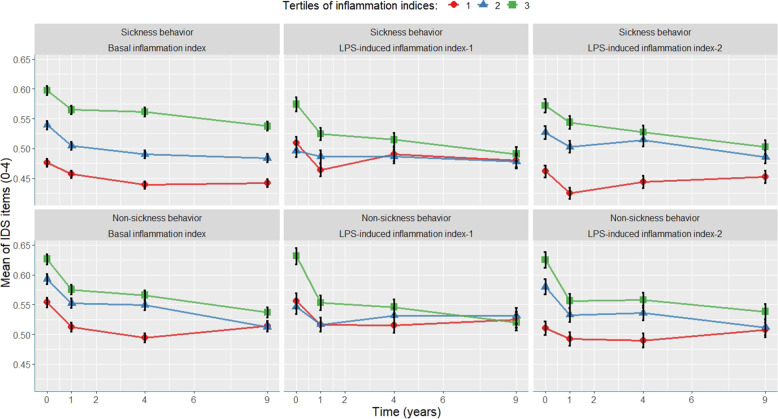Fig. 2. Tertiles of the basal inflammation index, LPS-induced inflammation index-1, and LPS-induced inflammation index-2 related to IDS-SR item-scores of sickness-behavior symptoms and non-sickness-behavior symptoms over the course of 9 years.
Inflammation indexes are divided into tertiles of equal proportions of the sample distribution (1. lowest inflammatory markers: 0.0–0.33; 2. middle: 0.33–0.66; 3. highest: 0.66–1.0). Y-axis represent absolute mean values of IDS-SR item-scores (0–3). Error bars representing standard errors. IDS items related to sickness behavior: sleeping too much (Item 4), feeling irritable (Item 6), responsiveness of mood (Item 8), decrease in appetite (Item 11), decrease in weight (Item 12), concentration (Item 15), pessimism (Item 17), general interest (Item 19), low energy level (Item 20), capacity for pleasure (Item 21), interest in sex (Item 22), psychomotor retardation (Item 23), aches and pains (Item 25), constipation or diarrhea (Item 28) and leaden paralysis (Item 30). Non-sickness behavior IDS items: falling asleep (Item 1), sleep during the night (Item 2), waking up too early (Item 3), feeling sad (Item 5), anxious or tense (Item 7), mood in time of day (Item 9a), quality of mood (Item 10), increased appetite (Item 12), increased weight (Item 14), view of myself (Item 16), death or suicide (Item 18), psychomotor agitation (Item 24), sympathetic arousal (Item 26), panic/phobic (Item 27), and interpersonal sensitivity (Item 29).

